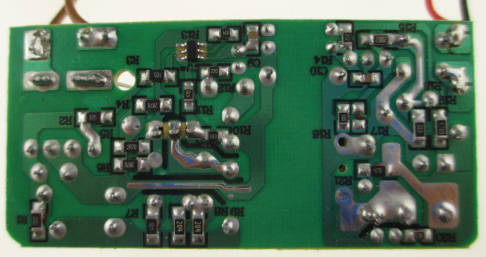The main reason for PCB processing broken drill nozzle
1. Drilling parameters: The setting of drilling parameters is very important. If the drilling speed is too fast, the drill bit will break due to excessive force. Too slow drilling speed will reduce production efficiency. Because the board thickness, copper thickness, and board structure of PCB boards produced by board material manufacturers are different, the PCB needs to be set according to the specific conditions. Through calculation and testing, the most suitable drilling parameters are selected. Generally, for a 0.3mm drill tip, the cutting speed should be 1.5-1.7m/min, and the drilling depth should be controlled between 0.5-0.8.

2. The backing plate for the backing plate and aluminum sheet drilling requires moderate hardness, uniform thickness, flatness, and the thickness difference should not exceed 0.076mm. If the backing plate is irregularly distributed, it is easy to jam the drill tip and the backing plate is uneven. It will make the pressure foot not press tightly, which is the twist and break of the drill bit, and the plate will also move with it during the up and down movement of the drill bit. The drill bit will break due to the unbalanced force when the tool is returned. Its function:
(1) Inhibit the occurrence of burrs in the pores.
(2) Fully penetrate the PCB board.
(3) Reduce the temperature of the cutting edge of the drill bit and reduce the broken drill.
Selection criteria for PCB substrate material
The cost of the PCB gold-plated board process is the highest among all the boards, but currently the most stable of all the existing boards, and the most suitable for use in the lead-free process board, especially in some high unit price or high reliability electronic products are recommended to use This board serves as the base material.
2.OSP board
The OSP process has the lowest cost and is easy to operate. However, this process requires assembly plants to modify equipment and process conditions and has poor reworkability. Therefore, the popularity is still not good. This type of board is pre-coated on the PAD after high temperature heating. The protective film is bound to be damaged, resulting in a decrease in solderability, especially when the substrate undergoes secondary reflow, the situation becomes more serious. Therefore, if the process needs to go through a DIP process again, the DIP end will face the challenge of soldering at this time.
3. Silver plate
Although "silver" itself has strong mobility, which leads to the occurrence of electric leakage, the current "immersion silver" is not pure metal silver in the past, but "organic silver" co-plated with organic substances. Therefore, it has been able to meet the future Due to the requirement of lead-free process, its solderability life is longer than that of OSP board.
4. Gold plate
The biggest problem of this type of substrate is the "BlackPad" problem. Therefore, many large manufacturers do not agree to use the lead-free process, but most domestic manufacturers use this process.
5. Tin plate
This kind of substrate is easy to be contaminated and scratched. In addition, the process (FLUX) will cause oxidation and discoloration. Most domestic manufacturers do not use this process, and the cost is relatively high.
6. Spray tin plate
Because of its low cost, good solderability, high reliability, and the strongest compatibility, this kind of spray tin plate with good soldering characteristics contains lead, so the lead-free process cannot be used.